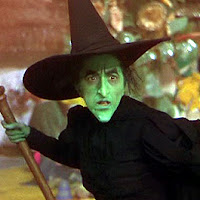 |
| Who sees her as the bad guy? |
They’re two of the first terms you learn in the study of literature: protagonist and antagonist. The protagonist is the hero, the schnook at the center of the story, the innocent in the middle of a hurricane. It’s easy to sympathize with heroes. Everything seems to happen to them and they’re created to be someone you like. So it should be easy to guess who the antagonist is. That’s the “udder guy”, the heavy, the louse who antagonizes the hero. Actually, an antagonist is simply whatever force that opposes the hero but some opponents go out of their way to make the good guy’s life miserable. At any rate, it’s easy to see the tale from the hero’s point of view but when I was struggling with a story years ago I got some good advice from my husband. “Never forget” he said, looking over the rims of his glasses, “No one sees themselves as the villain.”
 |
| Bertha Mason before she went to England.. Doesn’t look crazy, does she? |
 |
| Snidely Whiplash: a cartoon baddie |
 |
| Snape: Antagonist or Tragic Anti-Hero? |
Because they are human, these dimensional villains are far more interesting than the cardboard cutouts of melodrama. Yes, there’s a certain grandeur to Snidely Whiplash twirling his whip-thin mustache but he’s more of a mechanism than a man. Compare Snidely to Severus Snape, the anti-hero and secondary antagonist for much of the Harry Potter series. Raised to be a racist, Snape loses the love of his life while he’s still very young and lives the rest of his life with the results of his mistakes. He’s a difficult, demanding teacher but a talented one as well and most of the advice he gives the hero comes from the lessons he didn’t learn in time. The remarks are delivered with sneers and insults but the basic suggestions are good. “Don’t become a show-off.” “Rules are there to keep you safe.” “Learn to defend yourself.” Snape’s real error here is that he gives the advice he should have heeded, not what the hero needs. Isolation and insecurity make him a deeply flawed man but ultimately a person the reader can recognize and pity, something Harry starts to do when he first sees Snape’s worst memory in The Order of the Phoenix. Snape is humiliated and bullied by the men Harry viewed as role models and the rest of Snape’s life begins to take on the inevitability of a tragedy. The best characters become not “all good” or “all bad” but believably real and headed for
disaster.

No Comments
Comments are closed.